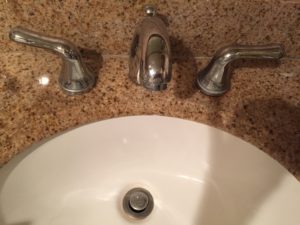Always get a hydrostatic plumbing test after foundation repair is performed on houses with slab or pier and beam foundations. The reason why is because leaks can lead to serious foundation damage. When a house is leveled and lifted, plumbing pipes may break. Of course, it’s entirely possible that the plumbing pipes in a house broke prior to the foundation being fixed. Oftentimes, leaks are the very reason the house developed foundation problems to begin with.
Why Contractors Require A Plumbing Test After Foundation Repair?
Contractors want customers to have a post plumbing test because they need to know if the domestic or sanitary sewage systems are leaking. After all, plumbing leaks (and excessive moisture of any kind) cause foundations to deteriorate. Find out more about how plumbing leaks damage slab foundations. If either system is leaking, contractors who warranty their work generally require that you fix the plumbing leak in order to prevent future foundation damage. When homeowners neglect to maintain their property and fix the leaks, their foundation repair warranty may be cancelled. In the end, any leaks affecting your foundation could prove to be very costly indeed.
What’s a Hydrostatic Plumbing Test?
It’s a specific test that foundation repair companies enlist licensed plumbers to perform. The test is used to detect slab foundation leaks, as well as issues with pier and beam homes. By putting your domestic and sanitary sewage systems under tremendous pressure, plumbers can tell if there is a leak somewhere in the pipes. (Keep in mind that camera plumbing tests are not the same as hydrostatic ones. Only hydrostatic testing allows for all areas of a system to be checked.)
Plumbers typically perform hydrostatic tests from the outside of your house. They do this by gaining access to the home’s “clean-outs.” These clean-outs are located right next to the home, and are basically a pipe that sticks up from the ground. They can be found on most houses built after 1970.
The testing process involves placing a floating ball in the pipe, placing the system under pressure and then seeing how much (if any) the water level drops. It could drop 4”, 14,” 20” or more. The more the water drops, the bigger the leak(s). If it doesn’t drop, you have no leak.
If your house is old and does not have clean-outs, a plumber may need to go inside your house, remove a downstairs toilet and test the system from there. Either way, if a plumber does determine that there is a leak, the tricky part is finding out exactly where the leak is coming from. In some cases the plumber can locate the leak quickly, but in other cases it could be quite a chore.
In the event the plumber that your foundation repair company enlisted to check for leaks detects one, you should be informed of it right away. At that point it is up to you, the customer, to have a licensed plumber find the leak and have the leak fixed. In the end, repairing the plumbing leak will preserve your foundation and protect your house for years to come. Remember: Do not neglect to fix leaks in your plumbing lines because they can lead to very costly foundation damage later on.
If you think your home needs foundation repair service, contact a qualified company like HD Foundations.

